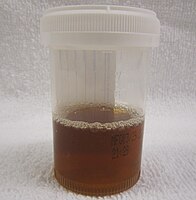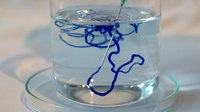
Heart-type fatty acid binding protein is a sensitive biomarker for early AMI detection in troponin negative patients: a pilot study
Sign Up to like & getrecommendations! Published in 2017 at "Scandinavian Journal of Clinical and Laboratory Investigation"
DOI: 10.1080/00365513.2017.1335880
Abstract: Abstract Background: Early detecting AMI in individuals presenting to the ED with chest pain continues to be a challenge. cTn is the gold standard for AMI diagnosis but early presenters ( read more here.
Keywords: fabp; fatty acid; type fatty; acid binding ... See more keywords

Diagnostic significance of heart-type fatty acid-binding protein as a potential biomarker to predict the mortality rate of patients with sepsis: a systematic review and meta-analysis
Sign Up to like & getrecommendations! Published in 2022 at "Expert Review of Molecular Diagnostics"
DOI: 10.1080/14737159.2022.2046464
Abstract: ABSTRACT Background Some studies have found that heart-type fatty acid-binding protein (H-FABP) is related to the prognosis of patients with sepsis. This study aimed to explore whether H-FABP could predict the 28-day mortality in patients… read more here.
Keywords: patients sepsis; analysis; mortality; type fatty ... See more keywords

Liver‐type fatty acid‐binding protein and neutrophil gelatinase‐associated lipocalin in cats with chronic kidney disease and hyperthyroidism
Sign Up to like & getrecommendations! Published in 2021 at "Journal of Veterinary Internal Medicine"
DOI: 10.1111/jvim.16074
Abstract: Abstract Background Liver‐type fatty acid‐binding protein (L‐FABP) and neutrophil gelatinase‐associated lipocalin (NGAL) are candidate biomarkers for the detection of early chronic kidney disease (CKD) in cats. Objective To evaluate urinary and serum L‐FABP and NGAL… read more here.
Keywords: liver type; fabp; fatty acid; type fatty ... See more keywords

Prognostic utility of heart-type fatty acid-binding protein in patients with stable coronary artery disease and impaired glucose metabolism: a cohort study
Sign Up to like & getrecommendations! Published in 2020 at "Cardiovascular Diabetology"
DOI: 10.1186/s12933-020-0992-0
Abstract: Background Heart-type fatty acid-binding protein (H-FABP) is a novel marker of myocardial injury and has been reported to be associated with cardiovascular diseases (CVD) including patients with diabetes mellitus (DM). Unfortunately, its prognostic value in… read more here.
Keywords: fabp; metabolism; fatty acid; type fatty ... See more keywords

Development of a Point-of-Care Test Based on Selenium Nanoparticles for Heart-Type Fatty Acid-Binding Proteins in Human Plasma and Blood
Sign Up to like & getrecommendations! Published in 2022 at "International Journal of Nanomedicine"
DOI: 10.2147/ijn.s359541
Abstract: Purpose A rapid, convenient, cost-effective in-home test method for identifying heart-type fatty acid-binding protein (H-FABP) in plasma and blood by a lateral-flow immunoassay (LFIA) based on selenium nanoparticles (SeNPs) was developed. Methods SeNPs were synthesized… read more here.
Keywords: plasma blood; acid; type fatty; blood ... See more keywords

Association between liver-type fatty acid-binding protein and hyperuricemia before and after laparoscopic sleeve gastrectomy
Sign Up to like & getrecommendations! Published in 2022 at "Frontiers in Endocrinology"
DOI: 10.3389/fendo.2022.993137
Abstract: Background Liver-type fatty acid-binding protein (FABP1) contributes to metabolic disorders. However, the relationship between FABP1 and hyperuricemia remains unknown. We aimed to evaluate the correlation between serum FABP1 and hyperuricemia in patients with obesity before… read more here.
Keywords: liver type; group; type fatty; fabp1 levels ... See more keywords

Effect of Muscle Fibre Type on the Fatty Acids Profile and Lipid Oxidation of Dry-Cured Venison SM (semimembranosus) Muscle
Sign Up to like & getrecommendations! Published in 2022 at "Foods"
DOI: 10.3390/foods11142052
Abstract: The aim of the study was to describe the effect of fibre type on the fatty acid profile and lipid oxidation observed in dry-cured ham produced from individual semimembranosus venison (roe-deer, fallow deer, deer and… read more here.
Keywords: oxidation; deer; fibre type; muscle ... See more keywords

Heart-Type Fatty Acid Binding Protein Binds Long-Chain Acylcarnitines and Protects against Lipotoxicity
Sign Up to like & getrecommendations! Published in 2023 at "International Journal of Molecular Sciences"
DOI: 10.3390/ijms24065528
Abstract: Heart-type fatty-acid binding protein (FABP3) is an essential cytosolic lipid transport protein found in cardiomyocytes. FABP3 binds fatty acids (FAs) reversibly and with high affinity. Acylcarnitines (ACs) are an esterified form of FAs that play… read more here.
Keywords: binding protein; acid binding; fabp3; type fatty ... See more keywords

Heart-Type Fatty Acid-Binding Protein (H-FABP) in Patients with Type 2 Diabetes Beneficiaries of Rehabilitation Program Post Coronary Artery Bypass Grafting
Sign Up to like & getrecommendations! Published in 2018 at "Revista de Chimie"
DOI: 10.37358/rc.18.10.6608
Abstract: Heart-type fatty acid-binding protein (H-FABP) is a non-invasive bio-marker, with high sensitivity and specificity, being capable to point out the myocardial injury and to predict major adverse cardiovascular events (MACE). Cardiac rehabilitation program, through a… read more here.
Keywords: heart; program; type fatty; post ... See more keywords